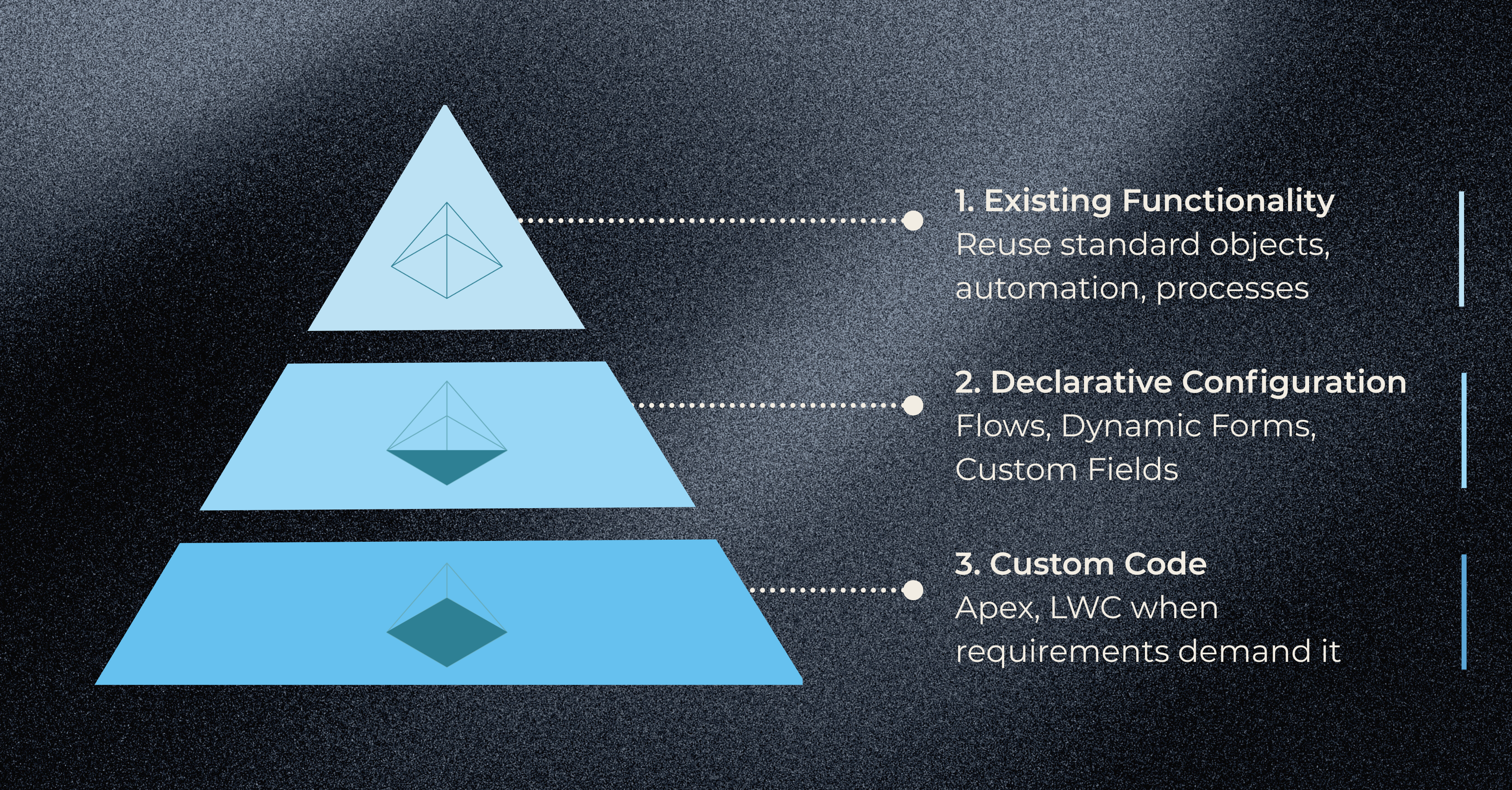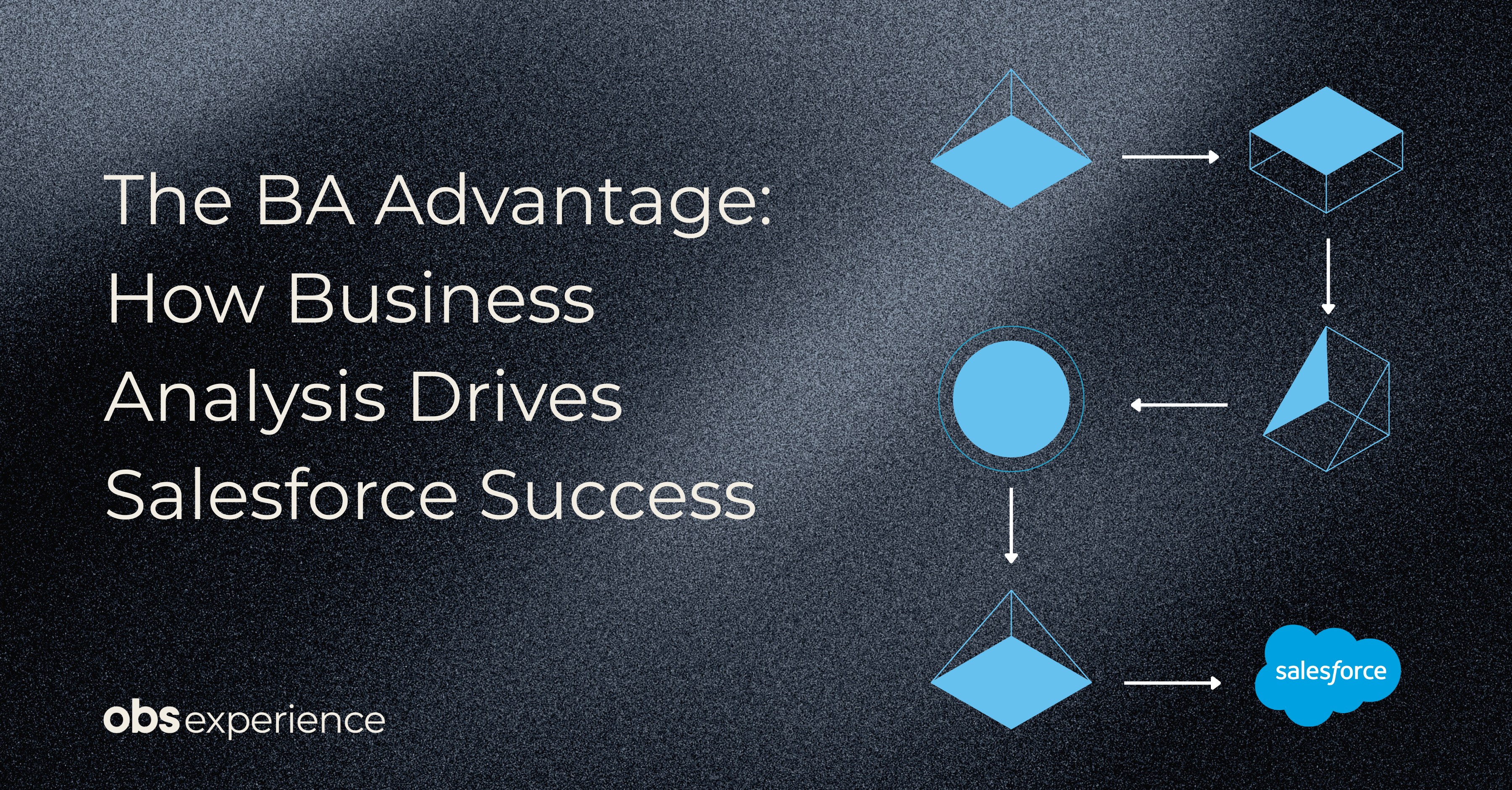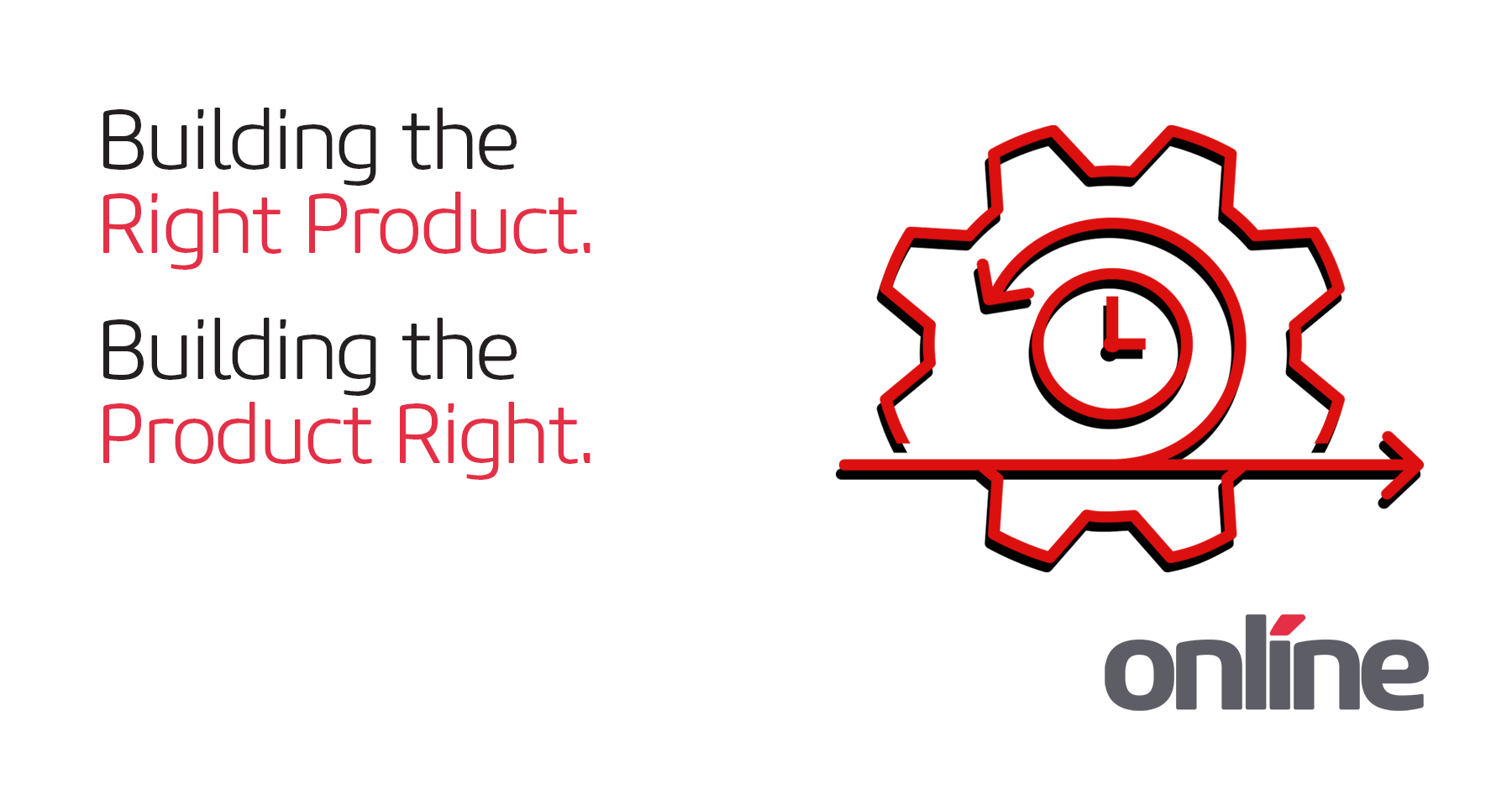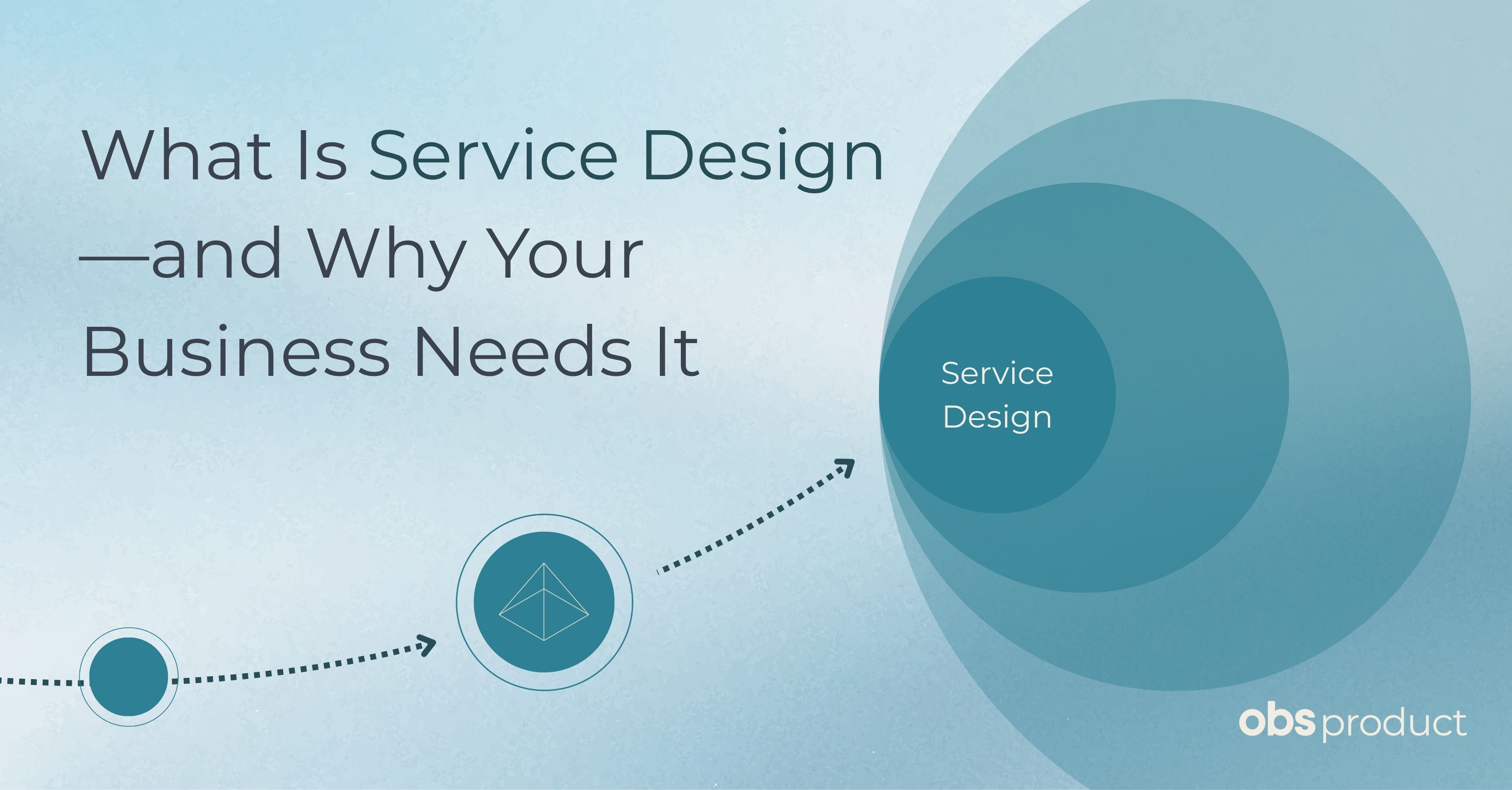
Brock Newitt
Brock Newitt is a Salesforce consultant in OBS's Salesforce team. He's been at the forefront of IT project management, and Salesforce solutions for over 15 years. Brock aligns tech capabilities with business goals to create impactful solutions. His outstanding communication and interpersonal skills empower teams in both large and small organizations to leverage digital tools efficiently.
In my previous post, “User Stories as the Gateway to Effective Design”, I focused on how strong user stories translate user intent into actionable requirements, capturing not just what users want, but why it matters. That work is foundational: without it, design decisions are misaligned, value is diluted, and delivery veers off course.
But a great user story isn’t the finish line for Business Analysis, it’s the starting point for everything that follows.
In this post, I want to explore how Business Analysts continue to add value well beyond initial discovery and storytelling. Specifically, how clear stories and thoughtful acceptance criteria equip delivery teams to make smart, intentional capability delivery decisions—decisions about how a solution should be implemented in Salesforce, whether through existing features, declarative tools, or custom code.
This is where Business Analysis becomes not just descriptive, but decisional: helping teams navigate trade-offs, align on outcomes, and build solutions that are not only functional, but scalable and supportable.
Let’s unpack how that happens—and why it matters.
Learn more about our Salesforce Solutions.
Why Business Analysis Matters in Salesforce Projects
Modern Salesforce projects are rarely just a technical install, they’re complex initiatives that span teams, business units, and customer touchpoints. A skilled Business Analyst helps connect business strategy to technical execution, ensuring every requirement maps back to real outcomes.
According to the Project Management Institute, 47% of unsuccessful projects fail because of poor requirements gathering.
Strong Business Analysis bridges this gap, keeping Salesforce projects aligned, scoped correctly, and positioned for long-term success.
Without strong Business Analysis, Salesforce projects risk:
-
Over-engineered solutions that don’t align with real user needs.
-
Poor reuse of existing functionality and missed opportunities to stay declarative.
-
Costly rework and higher technical debt.
-
Confusion and misalignment across business and technical teams.
Put simply: good Business Analysis keeps projects on time, on budget, and aligned with business goals, transforming Salesforce from a tool into a true business enabler.
From Stories to Strategy: The BA’s Role in Capability Delivery
Once user stories are shaped, the next major inflection point is deciding how to deliver the capability: do we reuse something already built? Can we achieve the outcome declaratively, using Salesforce configuration tools? Or is custom development warranted?
This isn’t just a technical decision, it’s a strategic one. And the BA plays a central role in shaping it.
Effective BAs don’t simply document requirements; they highlight dependencies, surface risks, and clarify what outcomes matter most. They understand not just what the user is asking for, but also:
- Where the request fits in the broader business context.
- How similar needs have been solved elsewhere in the org.
- What trade-offs exist between speed, flexibility, and maintainability.
This knowledge is crucial for capability delivery. Without it, teams default to familiar tools, often jumping to Flows or Apex when simpler (or more scalable) alternatives exist.
Benefits and Pitfalls of Effective Business Analysis Work
Let’s make it plain: the presence or absence of strong business analysis work dramatically changes the trajectory of a Salesforce implementation. Here’s how:
When BA work is strong:
- Solutions are more aligned with business value.
- Delivery decisions are smarter.
- Cross-functional collaboration improves.
When BA work is missing or ineffective:
- Requirements are interpreted inconsistently.
- Delivery is reactive, not intentional.
- The system becomes harder to scale and maintain.
Capability Delivery Decisions: What Are They, Really?
A capability delivery decision is the strategic choice we make about how to implement a business capability in Salesforce. These decisions happen constantly and typically follow a preferred hierarchy:
Existing Functionality
- Reuse what’s already built, leverage standard objects, automation, or processes.
Declarative Configuration
- Solve through tools like Flows, Dynamic Forms or Custom Fields.
Custom Code
- Use Apex or LWC when the requirement can’t be met otherwise.

Each decision point affects timelines, technical debt, and long-term support. The BA is the guide who makes sure each path is chosen for the right reasons, not out of habit or haste.
The Often-Overlooked Hero: Acceptance Criteria
If user stories are the “what” and delivery decisions are the “how,” then Acceptance Criteria is the bridge that connects the two.
Acceptance Criteria defines the conditions that must be met for a user story to be considered complete. When written effectively, it sets boundaries, creates shared understanding, and makes the story testable.
Think of it as the script for success: it tells us what the user is doing, under what conditions, and what should happen as a result.
Just like user stories follow a structure, “As a [user], I want to [action], so that [value]”, Acceptance Criteria also benefit from a structured format: Gherkin Syntax.
It reads like this:
Given [a starting condition or scenario]
When [an action is taken]
Then [the expected outcome should occur]
This format is simple, consistent, and focused on behavior.
Example:
Let’s say we’ve written this user story:
As a Sales Manager, I want Opportunities to automatically generate a proposal when the stage is updated, so that I can reduce time spent on manual document prep.
The corresponding Acceptance Criteria, written in Gherkin syntax, might be:
Given that a Sales Manager is viewing an Opportunity
When the Opportunity Stage is changed to “Proposal Sent”
Then, a Proposal PDF should be generated and attached to the record.
This kind of structure does more than just document expectations:
- It clarifies scope: Everyone knows what “done” looks like.
- It enables testing: QA can build scripts that mirror these conditions.
- It supports declarative thinking: Often, by seeing the behavior clearly, we realize it can be built with Flows instead of code.
- It aligns teams: Developers, testers, and stakeholders all speak the same language.
Business Analysts who apply this structure help the entire delivery team stay aligned on what the user is trying to achieve, and how we’ll know when we’ve achieved it.
Stories First, Delivery Second: The Hand-Off That Matters
You can’t make good delivery decisions without good stories, and you can’t validate a solution without good acceptance criteria.
Together, stories and acceptance criteria form the contract between business need and technical implementation. And this contract is shaped, maintained, and enforced by the Business Analyst.
A mature BA ensures every capability moves forward with:
- A shared understanding of what is needed.
- Clear, testable conditions for success.
- A confident decision on how it should be delivered.
Learn more about our Salesforce Partnership.
Conclusion: From Analysis to Impact
The role of a Business Analyst is often underestimated, but its impact is undeniable.
When BAs go beyond basic requirement gathering, when they craft user stories with intent, define clear, testable acceptance criteria, and help guide delivery decisions, they enable teams to deliver the right solution, the right way.
That’s the value proposition: strong Business Analysis leads to better design decisions, which leads to smarter, more maintainable capability delivery.
We’re not just building features. We’re delivering meaningful outcomes.
And that process begins with the story, but it’s the clarity of acceptance criteria and the strength of delivery decisions that bring it to life.
Next Steps: Applying Strong Business Analysis in Salesforce
I’m holding myself accountable to keep unpacking this theme, especially through real-world examples of capability delivery decisions and the pivotal role acceptance criteria can play in making (or breaking) them.
Have you seen this in action? I’d love to hear your stories.
Let’s keep the conversation going.





Submit a Comment